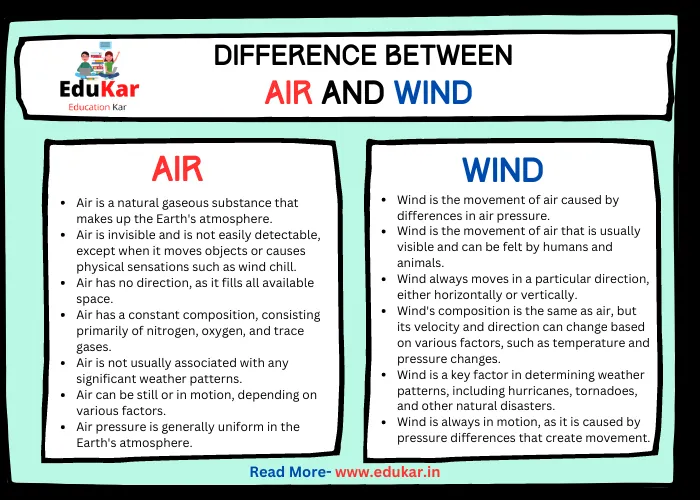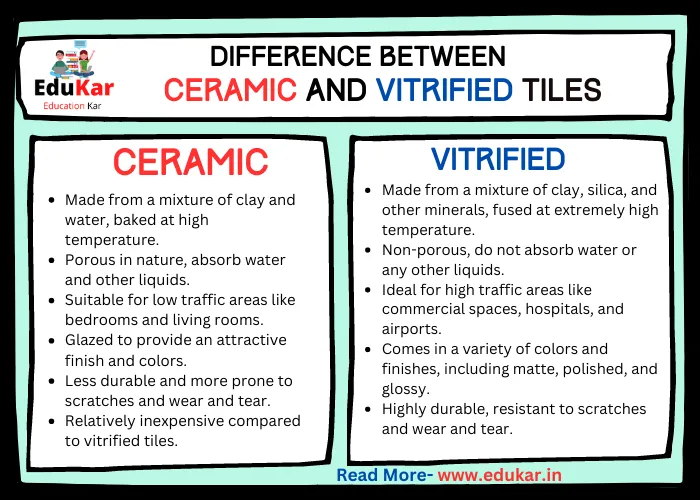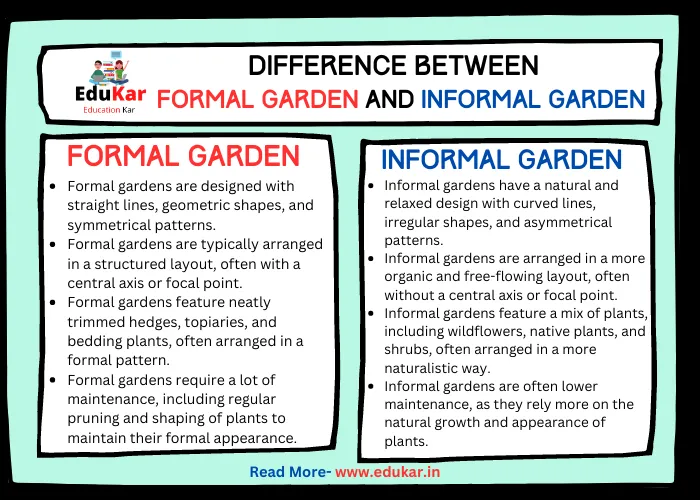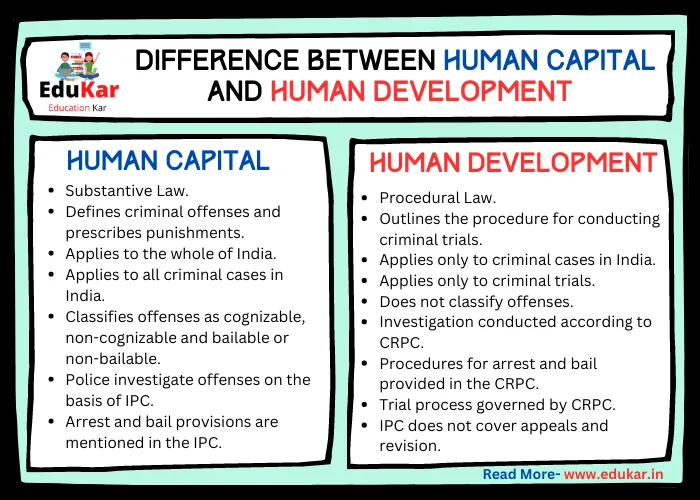Contents
Learn about the fundamental differences between air and wind with our comprehensive FAQs. Understand the composition of air, the movement of wind, and why it’s important to differentiate between the two in order to better understand weather patterns and climate.

Introduction
Air and wind are two fundamental components of our atmosphere that are often confused with one another. Although they are related and interdependent, there are significant differences between the two.
Air
Air is a natural mixture of gases that forms the Earth’s atmosphere. It is made up of nitrogen (78%), oxygen (21%), and other trace gases (1%). Air is invisible, odorless, and has no taste. It is all around us and essential for life on Earth.
Characteristics of Air
Air is a fluid, which means it has no definite shape or volume. It takes the shape of its container and expands to fill it. Air is compressible, which means it can be squeezed into a smaller space. It also has weight, although it is relatively light. The weight of air is known as atmospheric pressure, and it is measured in units of pounds per square inch (psi) or millibars (mb).
Composition of Air
As mentioned earlier, air is made up of various gases. Nitrogen is the most abundant gas, making up approximately 78% of the atmosphere. Oxygen is the second most abundant gas, comprising roughly 21% of the atmosphere. The remaining 1% of the atmosphere is made up of trace gases, such as argon, carbon dioxide, and neon.
Importance of Air
Air is essential for life on Earth. It is necessary for breathing, and without it, we cannot survive. Air also plays a crucial role in climate and weather patterns, as well as atmospheric processes such as photosynthesis and respiration.
Wind
Wind is the movement of air from an area of high pressure to an area of low pressure. It is the horizontal movement of air, which is caused by differences in air pressure. Wind is an essential component of weather patterns and plays a crucial role in shaping the Earth’s surface.
Characteristics of Wind
Wind has several characteristics that differentiate it from air. Wind has direction, speed, and force. Wind direction is the direction from which the wind is blowing, while wind speed is the rate at which the wind is moving. Wind force is the strength of the wind, and it is measured using the Beaufort scale, which ranges from 0 (calm) to 12 (hurricane force).
Causes of Wind
There are several causes of wind, including temperature differences, pressure differences, and the rotation of the Earth. Temperature differences occur because the Earth’s surface absorbs heat at different rates, creating areas of high and low pressure. Pressure differences occur because of differences in air density, which is affected by temperature and moisture content. The rotation of the Earth also affects wind patterns, causing the Coriolis effect, which deflects winds to the right in the Northern Hemisphere and to the left in the Southern Hemisphere.
Types of Wind
There are several types of wind, including local winds, global winds, and monsoons. Local winds are small-scale winds that occur over a small area, such as sea breezes and land breezes. Global winds are large-scale winds that occur over a larger area, such as the trade winds and westerlies. Monsoons are seasonal winds that occur in parts of Asia and Africa and are characterized by heavy rainfall.
Differences between Air and Wind
| Air | Wind |
|---|---|
| Air is a natural gaseous substance that makes up the Earth’s atmosphere. | Wind is the movement of air caused by differences in air pressure. |
| Air is invisible and is not easily detectable, except when it moves objects or causes physical sensations such as wind chill. | Wind is the movement of air that is usually visible and can be felt by humans and animals. |
| Air has no direction, as it fills all available space. | Wind always moves in a particular direction, either horizontally or vertically. |
| Air has a constant composition, consisting primarily of nitrogen, oxygen, and trace gases. | Wind’s composition is the same as air, but its velocity and direction can change based on various factors, such as temperature and pressure changes. |
| Air is not usually associated with any significant weather patterns. | Wind is a key factor in determining weather patterns, including hurricanes, tornadoes, and other natural disasters. |
| Air can be still or in motion, depending on various factors. | Wind is always in motion, as it is caused by pressure differences that create movement. |
| Air pressure is generally uniform in the Earth’s atmosphere. | Wind is caused by differences in air pressure, which can vary greatly depending on geographic location, weather patterns, and other factors. |
| Air’s movement is typically imperceptible unless it is moving at high velocities, such as during a storm. | Wind is always noticeable, even at low speeds, as it can affect the movement of objects and produce various sounds. |
| Air is essential for sustaining life on Earth, as it provides oxygen for breathing and regulates the planet’s temperature. | Wind has both positive and negative effects on the environment and can cause damage to buildings, vegetation, and other structures. |
| Air can be compressed, which can alter its density and pressure. | Wind cannot be compressed, as it is simply the movement of air from one area to another. |
Importance of understanding the difference between air and wind:
Understanding the difference between air and wind is crucial for several reasons.
1. It is essential for safety reasons. Understanding the causes and effects of wind can help individuals and communities prepare for severe weather events, such as hurricanes and tornadoes. It can also help individuals take precautions to prevent damage to infrastructure and property caused by strong winds.
2. Understanding the difference between air and wind is essential for environmental reasons. Wind can have a significant impact on the environment, such as erosion and transportation of pollutants. Understanding these effects can help individuals and communities take measures to prevent environmental damage caused by wind.
3. Understanding the difference between air and wind is crucial for scientific reasons. Wind plays a crucial role in shaping the Earth’s surface and affecting weather patterns. Understanding the causes and effects of wind can help scientists predict weather patterns, study climate change, and develop new technologies to harness wind energy.
Conclusion
Air and wind are two fundamental components of our atmosphere that are often confused with one another. Although they are related and interdependent, there are significant differences between the two. Air is a mixture of gases that forms the Earth’s atmosphere, while wind is the movement of air caused by differences in air pressure.
Understanding the difference between air and wind is essential for safety reasons, environmental reasons, and scientific reasons. By understanding the characteristics, causes, and effects of air and wind, individuals and communities can take measures to prevent damage caused by severe weather events and environmental damage caused by wind.
FAQs
What is air?
Air is a mixture of gases that make up Earth’s atmosphere. It is composed of approximately 78% nitrogen, 21% oxygen, and small amounts of other gases like argon, carbon dioxide, neon, helium, and methane.
What is wind?
Wind is the movement of air from an area of high pressure to an area of low pressure. It is caused by the uneven heating of the Earth’s surface by the sun, which creates differences in air pressure.
What is the difference between air and wind?
Air is a stationary component of the atmosphere, while wind is the movement of air. Air is a mixture of gases that make up the Earth’s atmosphere, while wind is a dynamic force that is caused by the movement of air.
How is air different from wind?
Air is a mixture of gases, while wind is the movement of air. Air is always present, while wind is the result of differences in air pressure. Wind can be felt or measured, while air is invisible.
Can wind exist without air?
No, wind cannot exist without air. Wind is the movement of air from an area of high pressure to an area of low pressure. Without air, there would be no movement, and therefore no wind.
What are some examples of air that is not wind?
Some examples of air that is not wind include the air inside a balloon or the air in a room that is still. This air is not moving and does not create a wind.
















